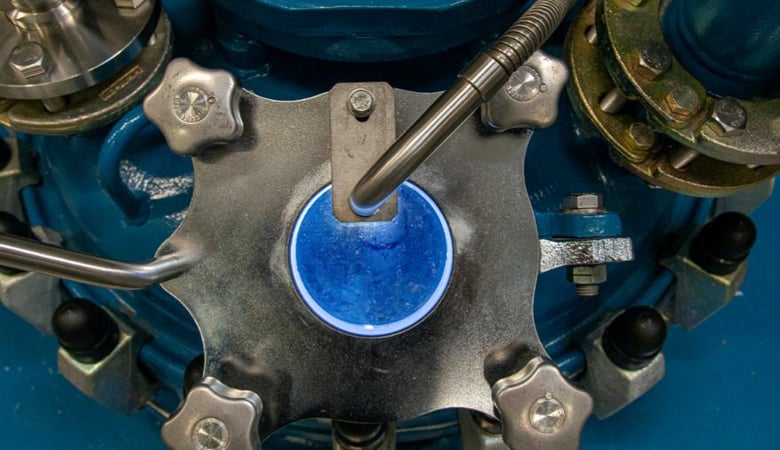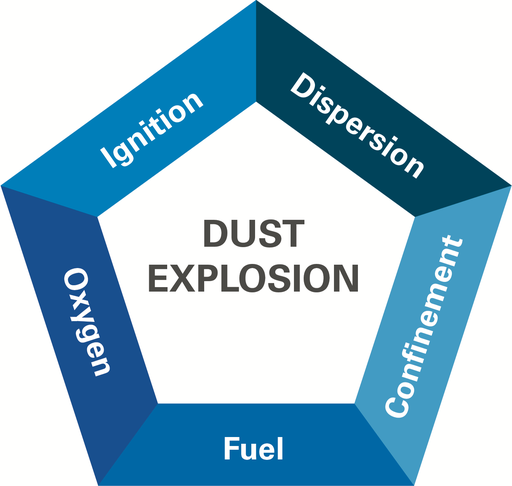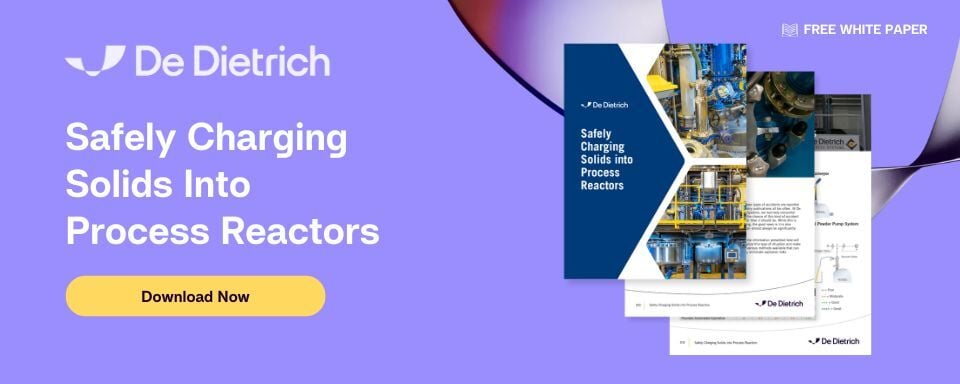Safely Charging Solids into Process Reactors
 While adding solids into a reactor is a common step in most reaction processes, you’d be surprised to know how often it’s done in an unsafe manner. Even for seemingly safe products, risks can arise from the potential ignition of dust or vapor clouds created within the reactor during manual charging. Adding an inert gas to reduce the amount of oxygen in the vessel can help, but the benefits of this precautionary step are often voided once a manway is opened to introduce solids manually. In this post we’ll touch on some ways to prevent explosion risks when adding solids to a reactor.
While adding solids into a reactor is a common step in most reaction processes, you’d be surprised to know how often it’s done in an unsafe manner. Even for seemingly safe products, risks can arise from the potential ignition of dust or vapor clouds created within the reactor during manual charging. Adding an inert gas to reduce the amount of oxygen in the vessel can help, but the benefits of this precautionary step are often voided once a manway is opened to introduce solids manually. In this post we’ll touch on some ways to prevent explosion risks when adding solids to a reactor.
Development of Explosive Conditions
Before you can prevent an explosion from occurring, it’s important to have a full understanding of what can cause one in a reactor. Vapor and dust are common biproducts of any operation that involves the addition of solids into a solvent. The top three ways that explosive conditions can develop in a reactor are due to the creation of:
- Flammable Solvent Vapors
- Combustible Dust Clouds
- Hybrid Dust / Vapor Cloud Combinations
Since flammable vapors and explosive dust clouds are both likely to be present inside a reactor during solids introduction, it is important to consider not only what impact they could have independently, but also what effect a mixture of them might have on their individual ignition characteristics. For example, even if the concentration of vapor and dust are below their individual explosive limits, the mixture of the two can be within its upper and lower explosive limits.
Ignition Sources
Once you’ve assessed the potential of an explosive atmosphere inside your reactor, the next step is to determine (and eliminate) any possible sources of ignition. The main sources for ignition in a reaction process are:
- Mechanical Sparks – often caused by running the agitator during solid’s charging (to prevent large clumps from forming)
- High Surface Temperature – produced by a potentially high vessel temperature in combination with frictional heat generated from an imbalanced mechanical seal.
- Electro-Static Discharge – generated by the accumulation and discharge of static electricity, created from two material surfaces rubbing together (e.g. fluids flowing into vessels or solid particles rubbing against one another)
Processes can have one or more potential ignition sources.
Ignition Prevention
While there are various methods for preventing explosions that can differ based on the uniqueness of your process and products, ultimately the most critical safety measure you can take is to inert the atmosphere in your vessel. Atmospheric air contains 21% oxygen so by sufficiently reducing this level through inertion, it is possible to achieve a level below which no ignition is possible. Be aware though – just because you inert a vessel to a presumably safe level, precautions still need to be taken to avoid the reintroduction of oxygen with solids. This is particularly important if manual or gravity feeding is used, i.e. manways are opened.
Dust Explosion Prevention Analysis
When considering the safest way to charge solids into a reactor, it’s essential to take into account all of the dust explosion elements in order to prevent an explosion from occurring. Using the dust explosion pentagon, you can analyze the greatest risks and what can be done to eliminate them.

Since fuel and dispersion, in the form of flammable solvent vapors and accumulated dust clouds are likely to be present inside the vessel, there is no way to eliminate those portions of the pentagon (and the confined space of a vessel is a non-negotiable factor as well). Ignition sources, such as heat or sparks due to mechanical failure or accident can never be prevented with 100% certainty, so an ignition source cannot be eliminated either. This leaves only the removal of oxygen as the most certain way to prevent fires and explosions from possibly occurring.
De Dietrich's Powder Pump is designed to do just this. Along with its static-dissipating materials and conductive design, it can provide an extremely safe method to introduce solids into a reactor by removing oxygen from the solids and replacing it with nitrogen prior to discharge into the reactor.
Are you looking for more information on the topic of safely charging powders? This post gives a very high-level overview of the problems that can arise when charging solids into a reactor. For a deeper dive into the subject, download our new eBook, Safely Charging Solids into Process Reactors. You can also contact our powder handling team if you have additional questions about the Powder Pump and how our powder handling solutions might be a fit for your application.
